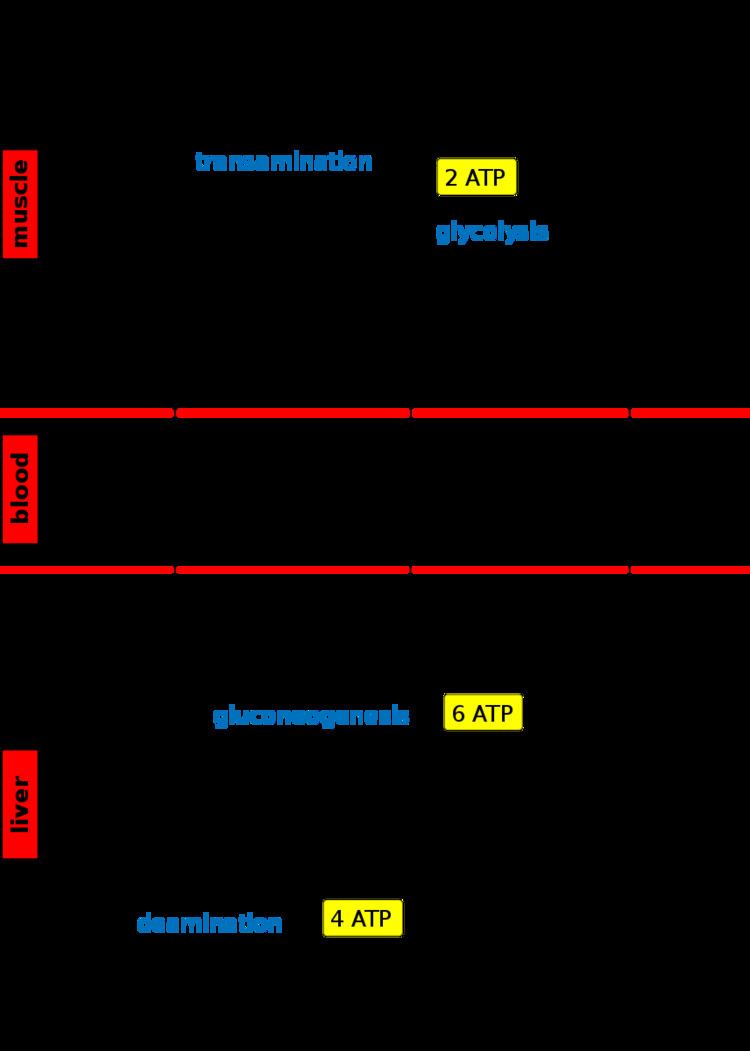 | ||
The Cahill cycle, also known as the alanine cycle or glucose-alanine cycle, is the series of reactions in which amino groups and carbons from muscle are transported to the liver. It is quite similar to the Cori cycle in the cycling of nutrients between skeletal muscle and the liver. When muscles degrade amino acids for energy needs, the resulting nitrogen is transaminated to pyruvate to form alanine. This is performed by the enzyme alanine transaminase, which converts L-glutamate and pyruvate into α-ketoglutarate and L-alanine. The resulting L-alanine is shuttled to the liver where the nitrogen enters the urea cycle and the pyruvate is used to make glucose.
The Cahill cycle is less productive than the Cori cycle, which uses lactate, since a byproduct of energy production from alanine is production of urea. Removal of the urea is energy-dependent, requiring four "high-energy" phosphate bonds (3 ATP hydrolyzed to 2 ADP and one AMP), thus the net ATP produced is less than that found in the Cori cycle. However, unlike in the Cori cycle, NADH is conserved because lactate is not formed. This allows for it to be oxidized via the electron transport chain. This pathway requires the presence of alanine aminotransferase, which is restricted to tissues such as muscle, liver, and the intestine. Therefore, this pathway is used instead of the Cori cycle only when an aminotransferase is present and when there is a need to transfer ammonia to the liver.
The alanine cycle also serves other purposes:
